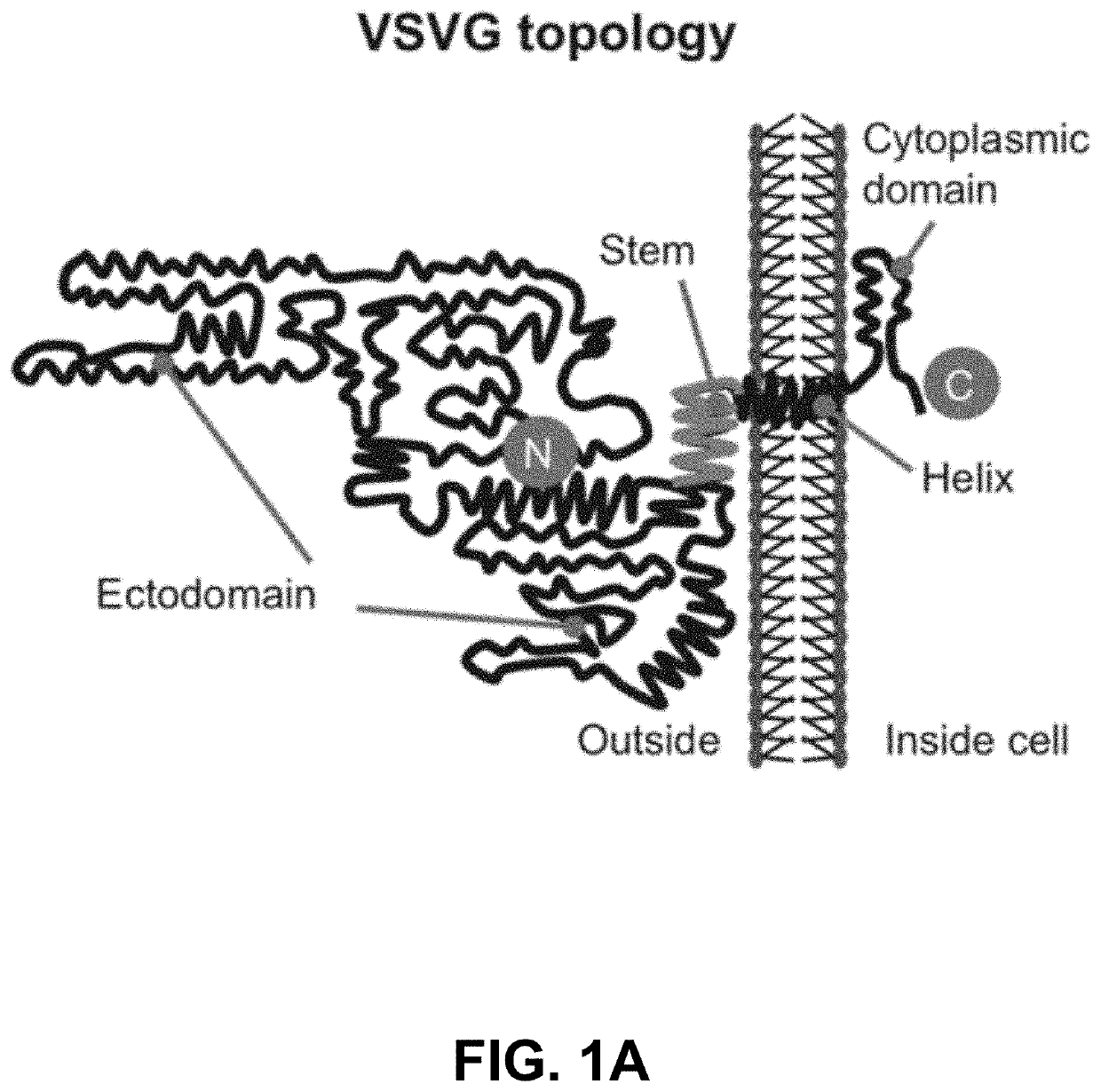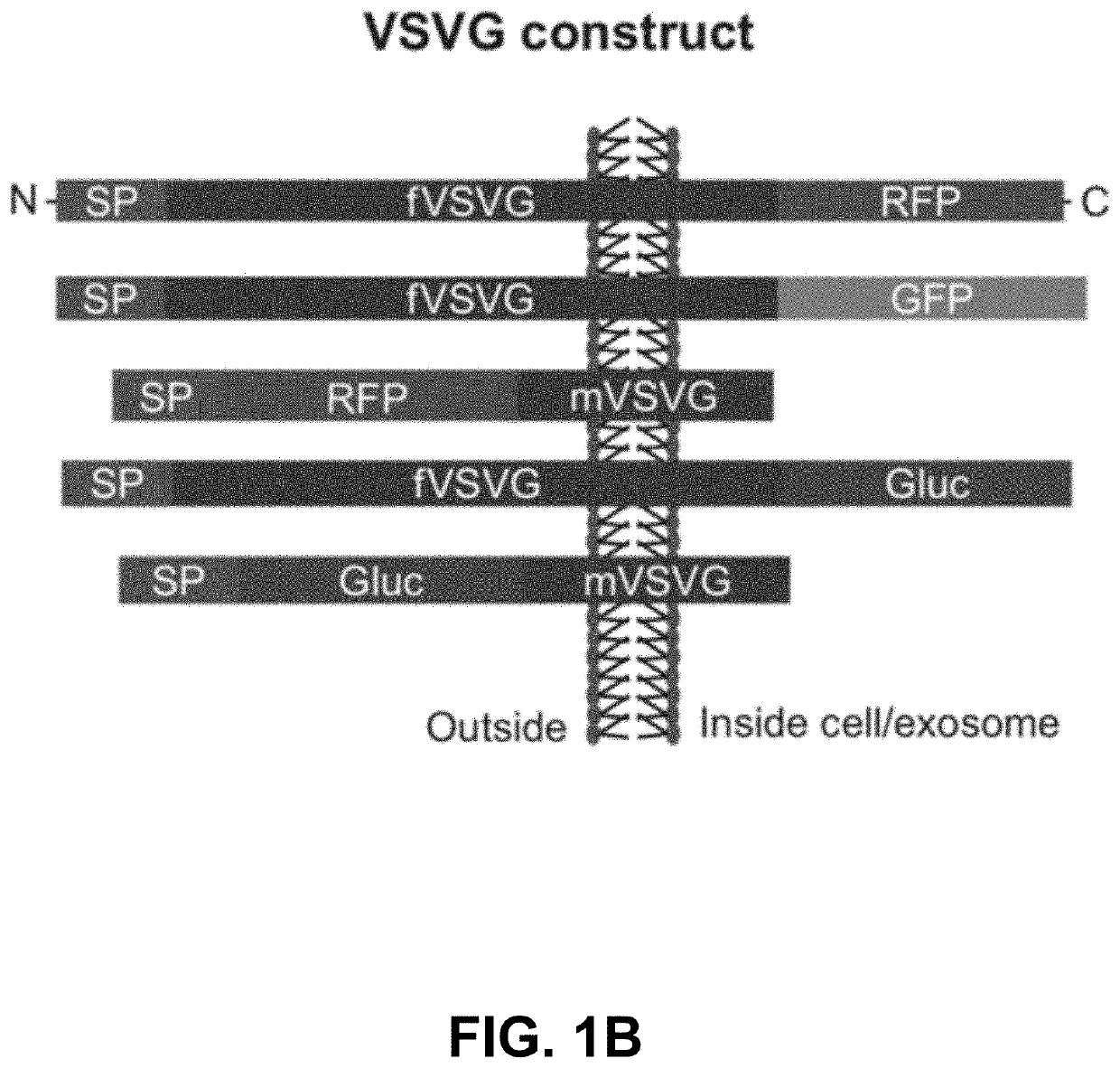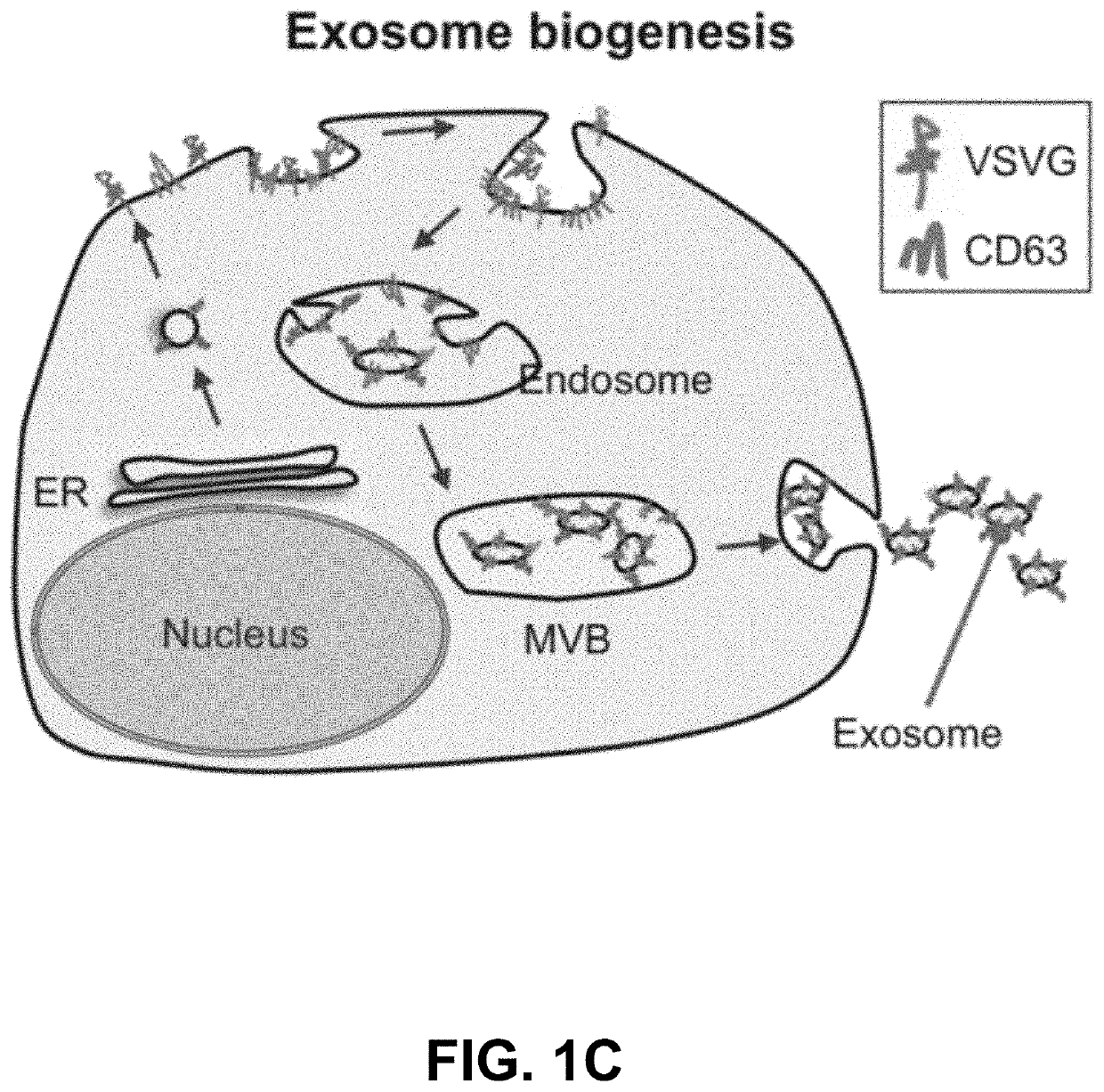Engineered Exosomes for the Delivery of Bioactive Cargo Using Transmembrane VSV-G
a technology of transmembrane vsv-g and exosomes, which is applied in the direction of biochemistry apparatus and processes, peptide sources, viruses/bacteriophages, etc., can solve the problems of affecting studies, mainly restricted to extracellular targets, etc., and achieve enhanced exosome uptake, enhanced infection of recombinant viruses, and effective protein loading
- Summary
- Abstract
- Description
- Claims
- Application Information
AI Technical Summary
Benefits of technology
Problems solved by technology
Method used
Image
Examples
Embodiment Construction
[0025]Materials and Methods
[0026]Cell Culture
[0027]Human embryonic kidney cells (HEK293) were purchased from Alstem (Richmond, Calif., USA). Human glioblastoma cells (U87), human liver cancer cells (HEPG2), and mouse adipose tissue fibroblast cells (L929) were purchased from the American Type Culture Collection (Manassas, Va., USA). All cells were maintained in high-glucose Dulbecco's Modified Eagle's Medium supplemented with 10% fetal bovine serum, 2 mM GlutaMax (Thermo Fisher Scientific, Waltham, Mass., USA), and 100 U / mL penicillin-streptomycin. At 80%-90% confluence, cells were treated with 0.25% trypsin-ethylenediaminetetraacetic acid for dissociation and passed at a ratio of 1:4. Human iPS cells (iPS11 and iPS15) were purchased from Alstem. These lines have been preadapted to feeder-free conditions and maintained in serum-free mTeSR1 medium (Stemcell Technologies, Vancouver, BC, Canada) supplemented with 100 U / mL penicillin-streptomycin. All cells were incubated at 37 C in 5% ...
PUM
| Property | Measurement | Unit |
|---|---|---|
| bioactive | aaaaa | aaaaa |
| length | aaaaa | aaaaa |
| fluorescent monitoring | aaaaa | aaaaa |
Abstract
Description
Claims
Application Information
 Login to View More
Login to View More - R&D
- Intellectual Property
- Life Sciences
- Materials
- Tech Scout
- Unparalleled Data Quality
- Higher Quality Content
- 60% Fewer Hallucinations
Browse by: Latest US Patents, China's latest patents, Technical Efficacy Thesaurus, Application Domain, Technology Topic, Popular Technical Reports.
© 2025 PatSnap. All rights reserved.Legal|Privacy policy|Modern Slavery Act Transparency Statement|Sitemap|About US| Contact US: help@patsnap.com



